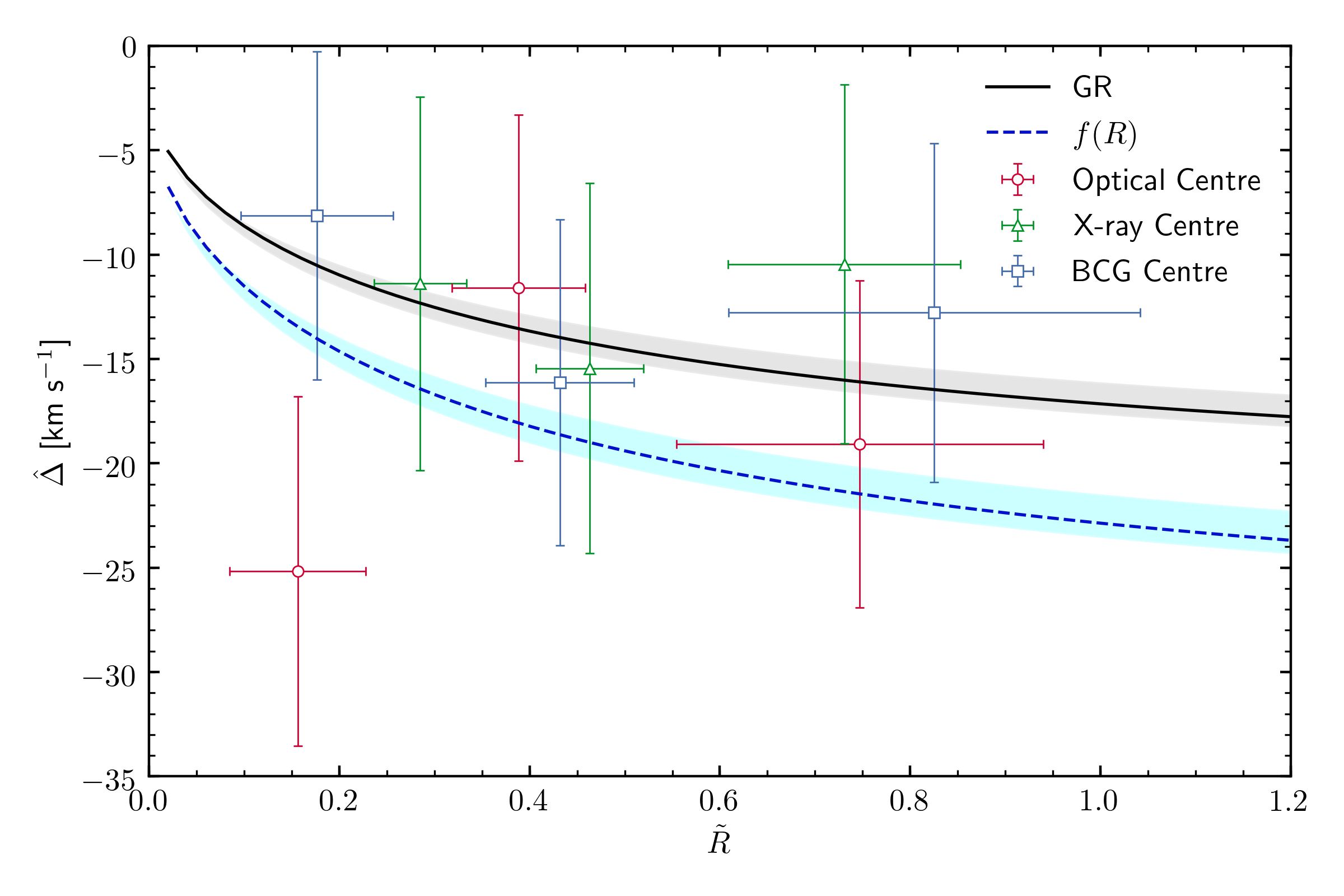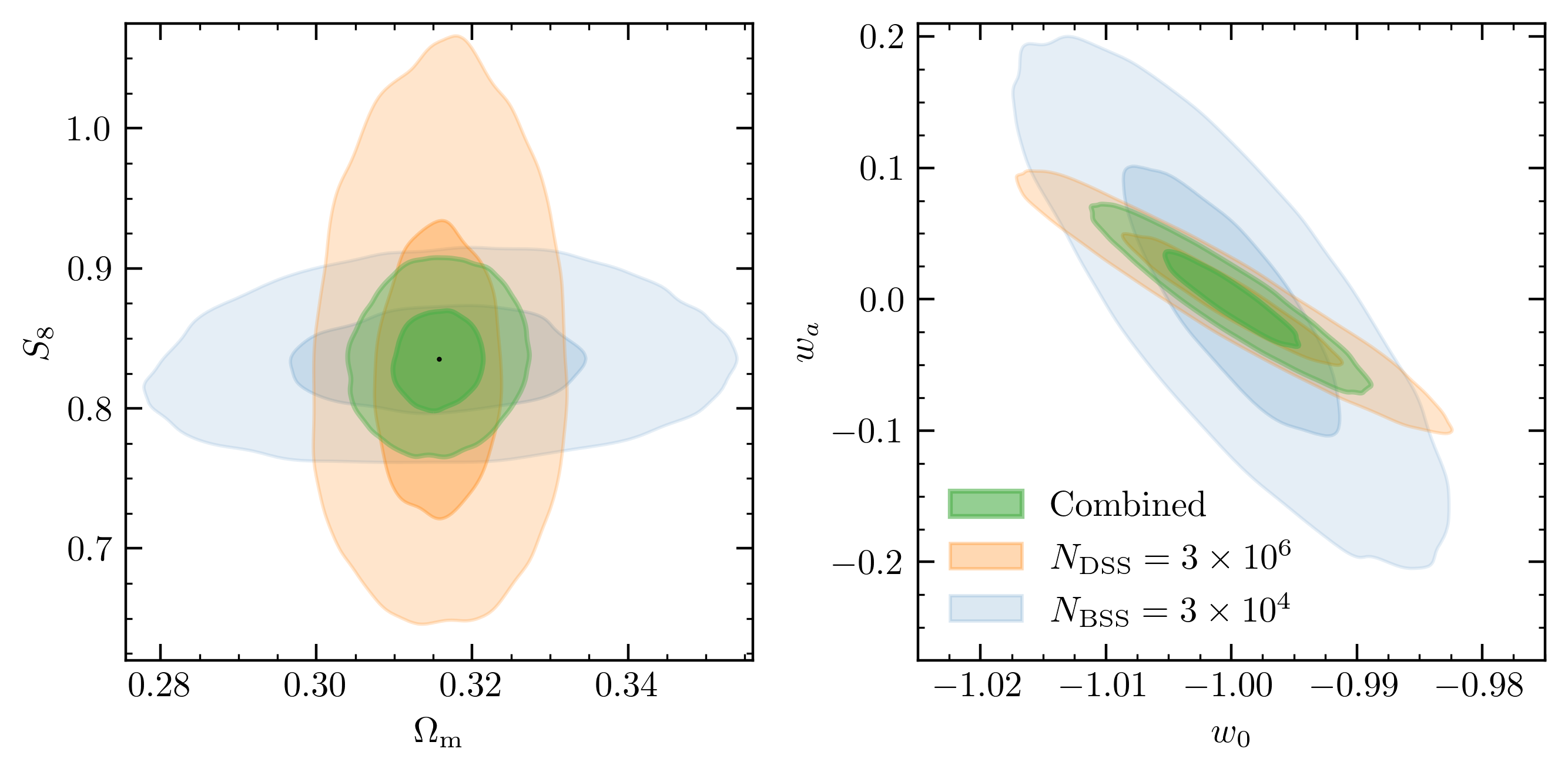Research
Here I summarise some of my work to date, looking at the gravitational redshifting of galaxies as a test of the theory of gravity, the weak lensing of gravitational waves and its cosmological applications, and galaxy clsuter profiles in the infall region as a cosmological probe.
Gravitational Redshift
As light escapes from galaxies residing in a galaxy cluster, it is redshifted by the subtational gravitational potential well it must climb out of. Thus, measurement of this redshift reveals information on the nature of the potential well, informing on the theory of gravity and the proeprties of dark matter.
The measurement is performed by comparing the spectroscopic redshifts of cluster members to the centre of the host cluster, yielding a velocity offset. Stacking clusters and combining velocity offsets provides a histogram whose mean value is sensitive to gravitational redshift. I used data from the SPIDERS (SPectroscopic IDentification of eROSITA Sources) cluster catalogue for a positive detection of gravitational redshift. Better data is needed for this to constrain the theory of gravity.
 Gravitational redshfing of galaxies in the SPIDERS cluster catalogue. Different definitions of the cluster centre are adopted, also shown are predictions in General Reltivity and an alternate theory of gravity, f(R).
Gravitational redshfing of galaxies in the SPIDERS cluster catalogue. Different definitions of the cluster centre are adopted, also shown are predictions in General Reltivity and an alternate theory of gravity, f(R).
I co-lead a Euclid Standard Proiject to measure this effect from Euclid spectrscopcy. We will then employ these measurements to test the weak equivalence principle and the theory of gravity.
Infall region of galaxy clusters
Weak lensing of gravitational waves
Just like light, graviational waves (GWs) created by the merger of compact objects (black holes and neutron stars) are weakly lensed as they propogate through the Universe. This causes a (de-)magnification of their wave amplitude. The ampltiude of a GW is inversely proportional to their distance, so weak lensing impacts the inferred distance to a source. If this is not properly accounted for, it can result in a bias on cosmological parameters inferred from gravitational wave standard sirens, where a combination of distance and redshift information is used to probe the Universe’s dynamics. I have investigated wether present approaches to dealing with this bias are sufficient. The figure below shows that, even after including a weak lensing uncertainty taken from the literature, the bias on parameters remains. More work is needed to correctly model the effect of weak lensing.
I have also explored the possibility for the weak lensing of GWs to be a powerful cosmological probe. The weak lensing of galaxies is measured through the distortion of their shapes, and so vast numbers of galaxies are needed such as their intrinsic shapes average to zero. The weak lensing of GWs is a more simple measurement and could in principle be observed with a single source. The figure below on the right assumes expeted source numbers for a combination of next-generation detectors, such as The Einstein Telescope and Cosmic Explorer. The magnification of the GWs is used to measure the convergence power spetrum, which allows us to constrain properties of matter and its clustering, while the distance-redshift information constraints dark energy equation of state parameters. This is done for bright standard sirens, sources with an electromagnetic counterpart, and dark standard sirens, sources without. Combining these two populations leads to improved constraints.
Weak lensing causes a bias on cosmological parameters 
641 gravitational wave standard sirens observed with a combination of third generation gravitaitonal wave detectors, Einstein Telescope and Cosmic explorer, are used to constrain the dimensionless expansion rate h, and the matter density parameter. In the unlensed case, each source experiences no lensing. In the lensed case, the lensing is drawn from predictions for the weak lensing magnification distribtuion, and an estimated weak lensing uncertainty is applied to each source. The industry-standard weak lensing uncertainty correction has underestimated the effect, and a bias on parameters remains.
Future measurements of the weak lensing of GWs can be ued to constrain cosmology  Constrints on matter and its clusters, and dark energy, using the weak lensing of gravitational waves. We can use bright standard sirens (BSS) and dark standard sirens (DSS) indpendently, or combine them for improved constraints.
Constrints on matter and its clusters, and dark energy, using the weak lensing of gravitational waves. We can use bright standard sirens (BSS) and dark standard sirens (DSS) indpendently, or combine them for improved constraints.
